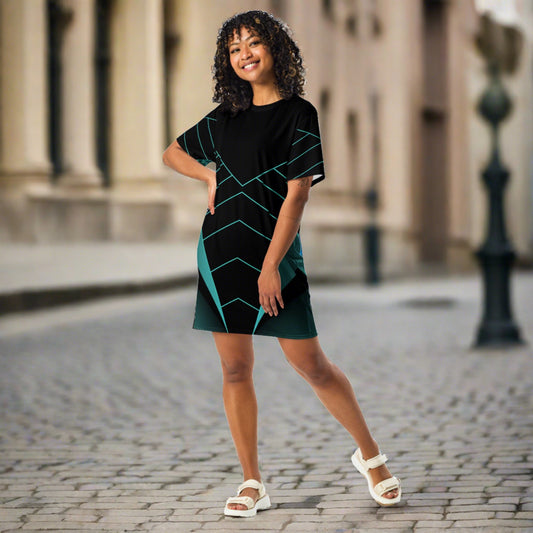
Backpacks vs. Bags: Choosing the Best Bag for Your Needs
When it comes to choosing between a backpack and a bag, the decision isn't just about carrying things from point A to point B—it's about finding the right partner for your daily adventures and tasks. Whether you're a student, a professional, or a traveler, the choice can greatly influence your comfort and efficiency throughout the day.
Understanding Backpacks
Types of Backpacks
Outdoor Backpacks
Designed for the rugged outdoors, these backpacks are built to withstand harsh conditions while providing ample storage and organizational features. Outdoor backpacks are ideal for adventurers and outdoor enthusiasts who face the elements, such as hikers, campers, and mountaineers. These backpacks are typically made with durable, water-resistant materials and include features like padded straps, waist belts, and multiple access points for gear. They often come with specialized compartments for sleeping bags, tents, and hiking poles, making them indispensable for extended outdoor trips.
Urban Backpacks
Sleek and stylish, urban backpacks are perfect for city dwellers who need a comfortable, secure way to carry their essentials. Urban backpacks blend functionality with fashion, offering a practical solution for daily commutes and city life. They often feature laptop compartments, water-resistant materials, and secure pockets to protect personal items in crowded places. Lightweight and ergonomic designs ensure comfort during long periods of wear, making them suitable for professionals, students, and casual city explorers alike.
Specialized Backpacks
From camera bags to hydration packs, specialized backpacks are tailored to specific activities or needs, ensuring that everything has its place. Specialized backpacks are engineered to meet the specific requirements of various activities, such as photography, cycling, or business travel. For instance, photography backpacks come with padded compartments to protect camera equipment, while cycling backpacks might include reflective elements and hydration bladders. These backpacks enhance performance by ensuring that all necessary tools are safe and readily accessible.
Benefits of Using Backpacks
Ergonomics and Comfort
Backpacks distribute weight evenly across your shoulders and hips, making them comfortable for prolonged use, especially when loaded with heavy items. The ergonomic design of backpacks is critical for avoiding discomfort and potential injuries. Many models include features like adjustable shoulder straps, ventilated back panels, and padded compartments, which help in reducing physical strain during transport. This makes backpacks particularly valuable for anyone carrying heavy loads regularly, such as students or outdoor professionals.
Capacity and Organization
With multiple compartments and pockets, backpacks excel in helping you organize your belongings effectively. Backpacks are designed to maximize space and allow easy organization of contents, from electronics to clothing and textbooks. Advanced models offer modular compartments that can be reconfigured based on the user’s needs, promoting efficiency and ease of access. This organizational capability makes backpacks a popular choice for both everyday use and travel.
Typical Uses for Backpacks
School
The quintessential partner for students of all ages, backpacks hold textbooks, laptops, and school supplies in an organized manner. Backpacks are indispensable for students as they provide a structured way to carry a wide array of educational tools from books to technology. The compartments in backpacks help students stay organized, ensuring they can easily find pens, calculators, notebooks, and other essentials. Especially in higher education, where the load is heavier, backpacks equipped with padded straps and backs offer the necessary support to prevent strain and promote comfort throughout the school day.
Travel
Ideal for the modern traveler, backpacks make navigating airports and new cities easier with features like built-in security compartments and easy access pockets. Backpacks serve as a practical companion for travelers, accommodating everything from clothing to cameras. The versatility of having a hands-free bag allows for easy movement through bustling environments like markets or transit hubs. Features such as lockable zippers and RFID-blocking pockets add an extra layer of security, safeguarding valuables from theft and electronic pickpocketing, making backpacks a safe choice for tourists and adventure seekers alike.
Sports and Recreation
Whether you're heading to the gym or the mountains, sports backpacks are designed to carry your gear in an organized and efficient way. Designed to withstand varied environments, sports backpacks are tailored to fit the needs of an active lifestyle, whether one is an athlete or a casual hiker. These backpacks often include hydration packs, durable materials that resist wear and tear, and reflective accents for safety during nighttime activities. The ergonomic design helps distribute weight evenly, reducing the risk of injuries and making it easier to carry equipment over long distances or rugged terrain.
Discovering Bags
Types of Bags
Shoulder Bags
These are perfect for those who prefer a more traditional and easy-to-access option for carrying their items.
Fabric Bags
Lightweight and often environmentally friendly, fabric bags offer versatility and practicality for everyday use.
Messenger Bags
Popular among professionals and cyclists, messenger bags provide quick access to contents without the need to remove the bag.
Benefits of Choosing Bags Over Backpacks
Style and Professionalism
Bags often come in a variety of designs that can complement professional attire better than backpacks. Bags, particularly those designed for professional settings, such as leather briefcases and sleek messenger bags, offer a level of sophistication and style that backpacks may lack. They are often seen as more suitable for corporate environments, aligning with business attire to create a polished appearance. This aesthetic appeal can enhance the perception of professionalism and may positively influence client and colleague impressions in workplace settings.
Ease of Access
Unlike backpacks, many bags allow you to access your items without having to take them off, which is handy in crowded places or when in a hurry. Bags designed for ease of access, such as shoulder bags and totes, allow you to quickly retrieve items without removing them. This feature is especially beneficial in busy urban environments or during commutes where time and convenience are crucial. The ability to access contents swiftly without having to unpack other items first can save time and reduce hassle in everyday situations.
Ideal Scenarios for Bags
Work and Business
For those who need to make a good impression in the business world, a sharp leather messenger bag or a sleek briefcase can be more appropriate than a backpack. In professional settings, carrying a stylish bag can communicate attention to detail and an understanding of workplace culture. High-quality materials and designs reflect a sense of sophistication that suits the business environment. Bags like briefcases are not only about style; they also provide practical compartments for documents, laptops, and other business essentials, facilitating organization and preparedness.
Shopping and Errands
When running errands or shopping, a tote bag is often easier to manage than a backpack, allowing for quick stowing and retrieval of items. For casual use such as shopping or running errands, tote bags offer practicality and ease. They are easy to carry, can be placed on the shoulder, and provide a spacious compartment to accommodate purchases or personal items. This type of bag is ideal for those who need a versatile and accessible option for daily tasks, where accessibility and capacity are more beneficial than the compact nature of a backpack.
Factors to Consider When Choosing Between Backpacks and Bags
Comfort and Ergonomics
Depending on your physical needs and the weight of items you carry, choose a bag that distributes weight evenly or provides the easiest access.
Purpose
Consider what you will primarily use the bag for—this will dictate the style, size, and features that best meet your needs.
Capacity and Organization
Evaluate how much you need to carry and how organized you need to be. Backpacks generally provide more space and compartments, while bags might offer quicker access.
Style and Personal Preferences
Your personal style and how you want others to perceive you can also influence your choice between a backpack and a bag.
Personal Stories and Testimonials
Students' Stories
Many students find backpacks indispensable for their ability to hold heavy books and laptops while keeping hands free.
Professionals' Insights
Business professionals often prefer the cleaner look of a bag, which meshes well with a suit and tie.
Feedback from Travel Enthusiasts
Travelers frequently switch between bags and backpacks depending on the type of trip—opting for backpacks for adventure travels and shoulder bags for urban exploration.
Conclusion
Choosing between a backpack and a bag is more than just a practical decision—it reflects your lifestyle, activities, and personal brand. Whether you opt for the ergonomic support of a backpack or the stylish simplicity of a bag, the key is to choose the one that best fits your day-to-day life.
Frequently Asked Questions
-
Which is better for minimizing back pain, a backpack or a shoulder bag? A backpack is generally better for minimizing back pain compared to a shoulder bag because it distributes weight more evenly across both shoulders, reducing strain on any one side of the body. This ergonomic advantage helps prevent the development of back pain.
-
Can I use a backpack for professional settings? Yes, backpacks can be suitable for professional settings, especially those designed with a sleek, minimalist aesthetic. Many modern backpacks are made with professional appeal in mind, catering to the needs of business environments.
-
What is the best type of bag for carrying electronics safely? The best type of bag for carrying electronics safely is one with dedicated, padded compartments to protect devices from impact and scratches. Travel bags specifically designed for electronics often feature these protective elements.
-
How do I choose a bag that's good for both work and travel? Choose a bag that is versatile, durable, and has adequate space for work essentials and travel necessities. Look for features like laptop compartments, easy-access pockets, and adjustable straps for comfort and functionality.
-
Are there waterproof options available in both backpacks and bags? Yes, there are waterproof options available in both backpacks and bags. Many manufacturers offer models made with water-resistant materials or coatings to protect contents from rain and spills.




